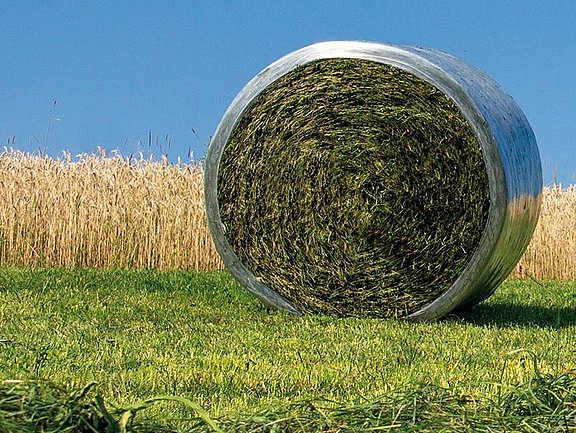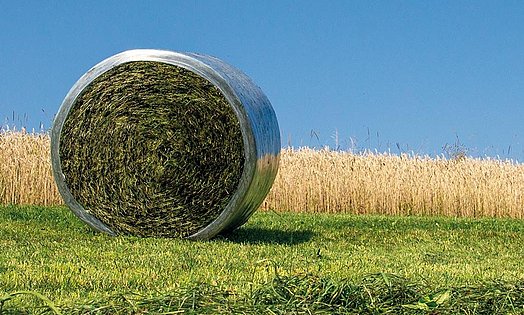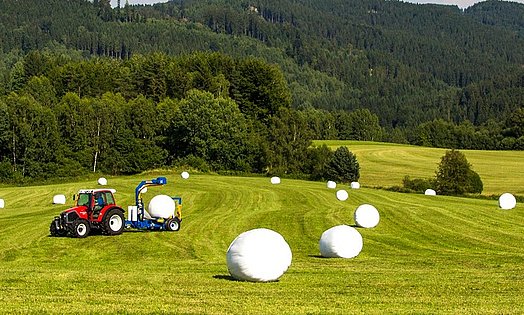Baleage
What should you know about haylage?
Haylage, also called fermented hay, is an interesting alternative to silage or classic hay for some farmers. This form of fodder is especially popular in horse husbandry, but is also suitable for game or small ruminants such as sheep and goats. Production is complex: it depends on both the timing of mowing and the correct airtight pressing and wrapping. Only in this way the haylage becomes durable through the fermentation process and has a sufficiently high quality.
The correct production of haylage
Producing high quality haylage can definitely be a challenge. It should not be underestimated under any circumstances. You should only try your hand at making it when you already feel confident with regular silage. Haylage differs from silage in its higher dry matter content (DM, dry matter = fresh matter - water content). This is generally above 50 %, with classic silage only between 30 - 40 %. If the DM content is too high, i.e. over 70%, the haylage is hardly ensilageable: mold develops. This is true poison, especially for sensitive horse stomachs.
The time of mowing is an essential factor
A horse, for example, needs structure in its feed. The first cut contains particularly many stems, but the second is more suitable because of the higher proportion of leaf material. It should also be noted that mowing is done in a timely manner.
Forage that is too rich in stems and mowed late is rather unsuitable for haylage, as the coarse stem parts do not allow an airtight condition in the fermentation hay bale. At the latest when the hay bale is damaged or opened, oxygen flows into the cavities, displacing carbon dioxide. This favors the growth of harmful bacteria and yeasts, which, by metabolizing the lactic acid they contain, cause the pH to rise. Mold growth is the result, and reheating also becomes a problem during this process. Both have a negative influence on the intestinal flora of a horse. The ideal pH value of high-quality fermentation hay is between 4.5 and 5.5.



